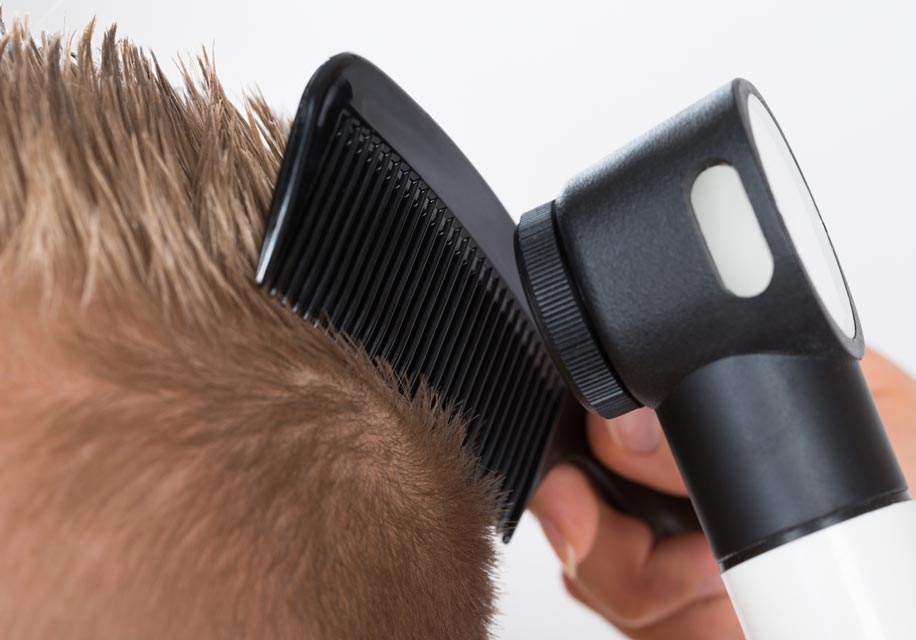Diagnostic Tests for Hair Loss

Diagnosing the cause of non-scarring hair loss in men is usually simple. That's because the patient typically HAS an identifiable pattern of hair thinning that matches hormone-related causes. In women hair loss can be more difficult. The majority have overall diffuse hair thinning (resembling telogen effluvium), and even when hormones are involved the pattern may not be so obvious.(3)
There are a number of tests that dermatologists will conduct on men and women who present with diffuse (unpatterned) hair loss. Procedures may involve blood tests to help identify any underlying medical condition which could be causing thinning hair. As with any medical issue, diagnosing the cause of hair loss begins with the least invasive diagnostic procedures and progresses to more invasive methods if initial tests fail to identify the causes of hair loss. These include:(1, 6, 29-31, 354)
DIAGNOSTIC PROCEDURES |
|
|---|---|
Answer: A clinical examination will note the presence of lesions (e.g., secondary syphilis and kerion lesions with fungal infections) patterns of hair loss typical of androgenetic hair loss; identifies nail changes that could be indicative of a trigger event for telogen effluvium. |
Answer: A Woods light detects scaling and infection (e.g., seborrheic dermatitis and tinea capitis) due to presence of fungal organisms that fluoresce different colors. |
Answer: A wash test collects & measures # and type (by length) of hair lost while washing hair once (after 5 days without washing). |
Answer: Dermoscopy is a photography tool that shows hair caliber (to identify shrinking follicles), empty follicles, inflammation, and pigmentation changes that could indicate history of trauma or an inflammatory condition.When used on the scalp and hair, dermoscopy is called trichoscopy. Differences in findings help determine type of hair loss. |
Answer: Traction tests measure the number and % by phase of hairs shedding by slightly pulling on sections of scalp hair. |
Answer: A pull-out sign test measures the strength of hair by slightly pulling on a tuft of hair. |
Answer: With a phototrichogram test, a small area of the scalp hair is clipped to 1-mm and photographed and density assessed. Clipped hair diameters are measured. Area is photographed again in 1-3 days to determine ratio of hairs in growth vs. resting phases and rate of hair growth. |
Answer: A trichoscan test involves analyzing a shaved transitional balding area is via an epiluminescence microscope for 2 factors: (a) density of hair by hair type and (b) what phase of the hair growth cycle they are in. |
Answer: A variety of lab tests on patient's blood can help identify underlying conditions that cause hair loss, including hormonal imbalances:
|
Answer: When the diagnosis is questionable, a biopsy of the balding area can be taken using a surgical tool that punches out a 4-mm section from the surface down into the sub-cutaneous tissue. Horizontal and vertical successive punches should be taken and evaluated for density by hair and phase type as well as inflammatory changes at the cellular level. |
